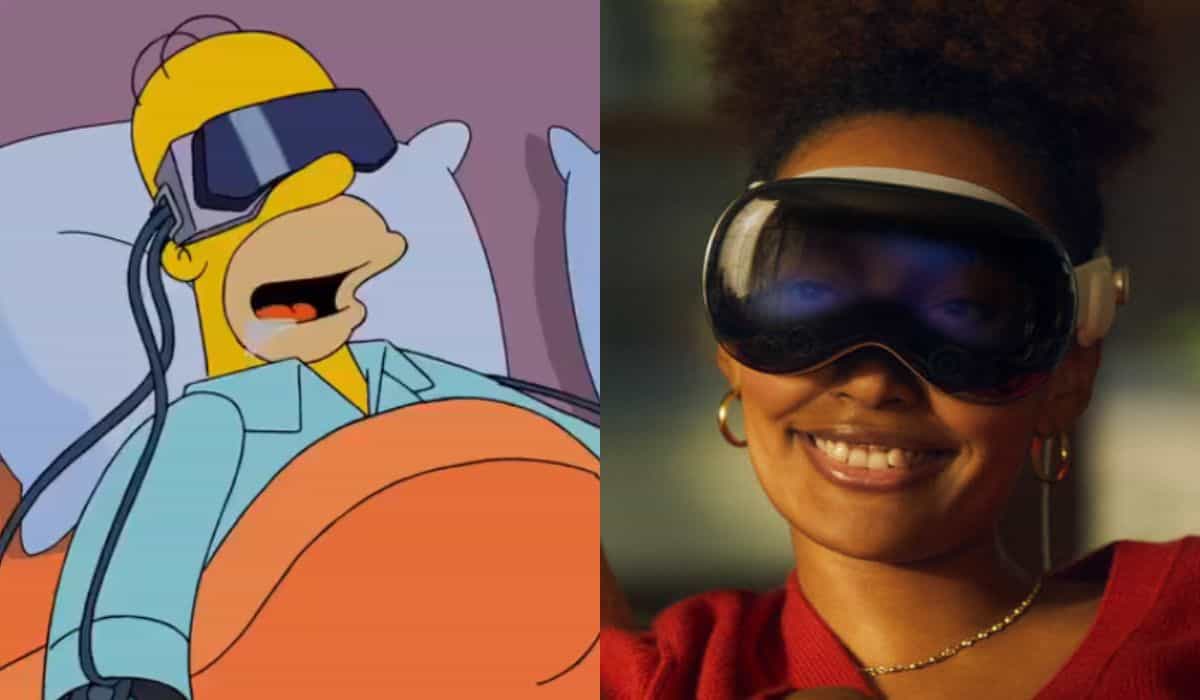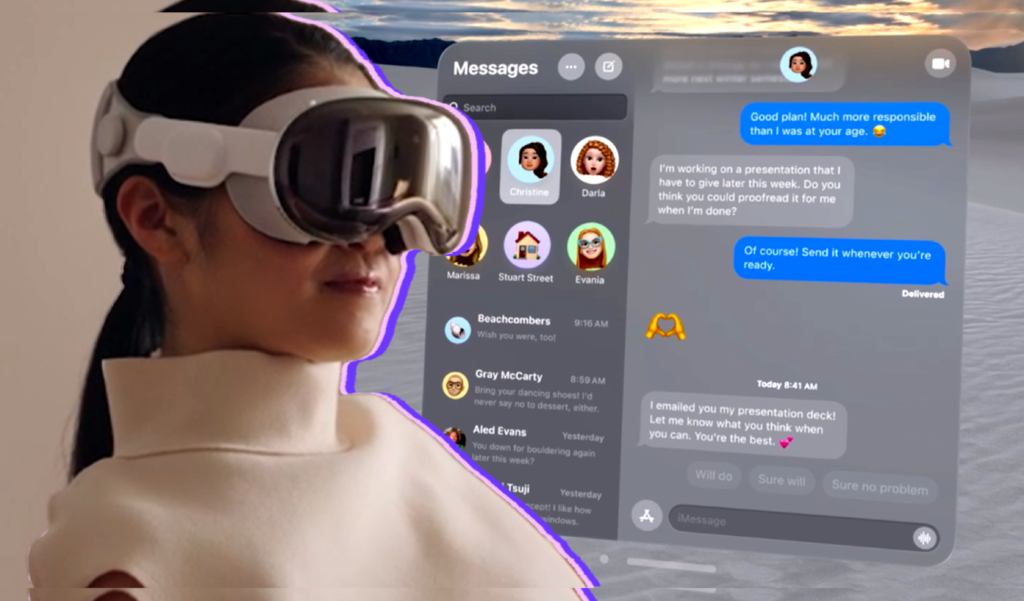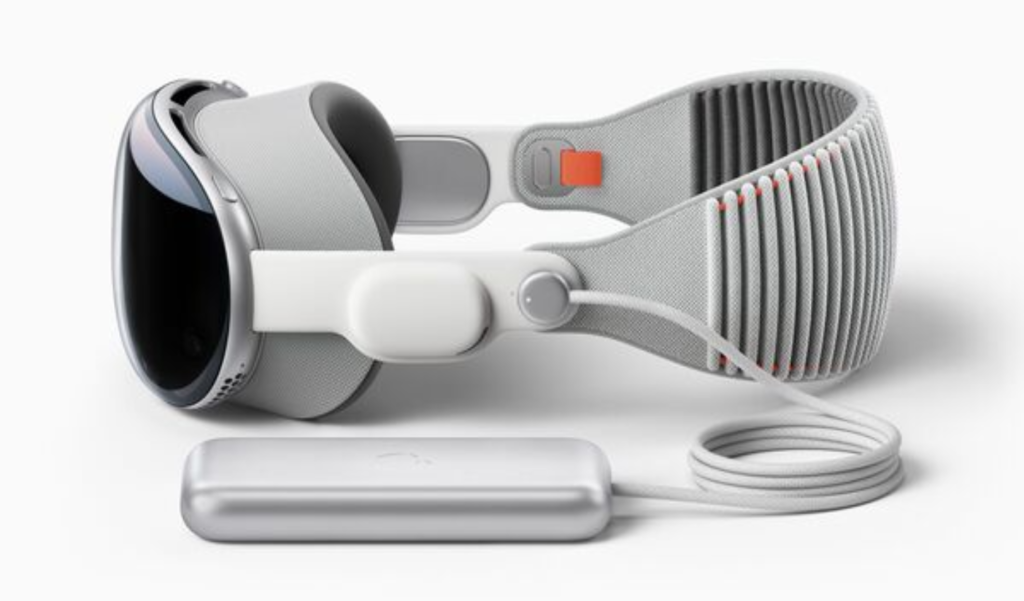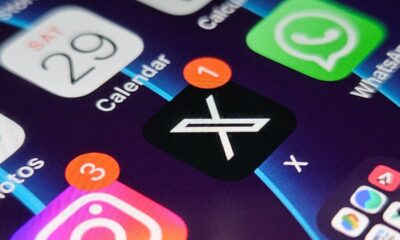Technology
The Simpsons did it again! This time foreseeing Apple’s latest technological innovation – The Apple Vision Pro
Published
3 months agoon

In a captivating twist, The Simpsons has once again showcased its remarkable foresight, this time predicting Apple’s latest technological marvel – the Vision Pro, virtual reality headset. The long-running animated series, now in its 35th season, has a track record of accurately anticipating real-world events, leaving both viewers and fans astounded.
What Happened
Since the Vision Pro was released, images have gone viral of people wearing headsets on the street or the train. A driver of a Tesla vehicle was even pulled over wearing the Apple Vision Pro while driving.
While a world filled with people all wearing headsets in public could be years or decades away, “The Simpsons” may have predicted disasters that could happen.
A clip from the 2016 episode titled “Friends and Family” went viral on X, formerly known as Twitter, with more than eight million views. In the clip, residents of the fictional town of Springfield are seen wearing a virtual reality headset and subsequently running into light posts, falling down a manhole and lying in bed with a headset on next to a significant other also wearing a headset.
Little did the audience realize that this satirical glimpse into futuristic technology would materialize as Apple’s cutting-edge Vision Pro headset eight years later, priced at a staggering Rs 2.8 lakh.
Well, it’s truly mind-blowing how “The Simpsons” continues to predict the future with eerie accuracy. The show has even been called clairvoyant by some though showrunners have repeatedly said that the “predictions” it has made are coincidental.
Apple Vision Pro is here

Meanwhile, the recently unveiled Vision Pro by Apple has rapidly become a sensation in the tech industry. Tim Cook, Apple’s CEO, lauded it as “the most advanced consumer electronics device ever created.” With compatibility across macOS, iOS, and iPadOS operating systems, the device provides users with access to a myriad of apps, photos, and spatial FaceTime video.
Whether you have a spare $3,499 lying around or not, gaining insights into Apple’s latest product, its implications for the company, sales performance, reception, and the future trajectory of this innovative addition to Apple’s product lineup is valuable.
Since its official launch, the Vision Pro has captured significant attention, boasting an estimated 200,000 units sold through pre-orders, as reported by the New York Post. Users have flooded social media platforms with videos, showcasing their immersive experiences with the VR headset in public settings, reminiscent of scenes depicted in The Simpsons episode nearly a decade ago.
What’s it like to use Vision Pro

Using the Vision Pro headset provides a versatile range of experiences, from watching movies and listening to music to browsing photos, examining 3D objects, and collaborating on presentations.
The user interface employs a three-dimensional system, offering control through the user’s eyes, hands, and voice. But the real control happens with your eyes: Vision Pro can detect exactly where you are looking.
As a result, users can browse through apps by simply looking at them, tapping their fingers to select, flicking their wrist to scroll, or using voice to dictate. You can just look at a text input and begin dictating, for example. Users can utilize a virtual keyboard, type through dictation, and control the device with Siri.
Apple has shared a comprehensive 10-minute guided tour, detailing navigation, gestures, and showcasing various apps.
Try it before you buy it
Apple is offering demonstrations of the Vision Pro at Apple Stores, allowing potential buyers to experience a proper fitting and walkthrough of its features before making a purchase. The device may require precise fitting, including the use of additional lens inserts, and Apple’s staff are being trained accordingly.
The Vision Pro is priced at $3,499 for the 256GB storage variant, with no current option for additional storage. While some developer units reportedly came with 1TB storage, Apple has not confirmed this option. International pricing, including that for the U.K., is yet to be officially announced but is expected to align with Apple’s typical pricing structure.

The Vision Pro package includes both a Solo Knit Band and a Dual Loop Band for user comfort, along with an external battery pack, USB-C charging cable, power adapter, two light seal cushions, a cover, and a Polishing Cloth, which is separately sold for $19.
Apple Vision Pro compatibility
Apple has not provided specific details regarding the required iPhone generation for Vision Pro compatibility. However, it appears that the headset may not be universally supported by all iPhone models. Surprisingly, it seems that owning an iPhone or Mac might not be a prerequisite for its usage.
The Vision Pro’s display offers mirroring capabilities to any AirPlay-enabled device, such as iPhone, iPad, Mac, Apple TV (2nd generation or later), or an AirPlay-enabled smart TV.
Additionally, Apple has assured compatibility with “popular game controllers” for the Vision Pro.
What reviewers are saying
The reviews for The Vision Pro are starting to come in. While some reviewers praise it as “the best wearable display” to date, criticisms have emerged, questioning its purpose, appeal, weight, size, battery life, and the absence of a definitive standout application.
According to a review from The Verge, Apple’s headset comes with pros and cons. The pros include calling the device, as well as its hand and eye tracking, “technical marvel.” The headset works seamlessly with other Apple products, Verge wrote.
“The Vision Pro is stunning compared to other VR headsets,” the author wrote, adding that other headsets are plastic and “downright goofy looking.”
Still, the device is very expensive and video passthrough can be blurry. At times the hand and eye tracking can be “inconsistent and frustrating” and the 3D persona system, a rendering of the user, has “a long way to go.”
A video review by The Wall Street Journal described the product as both practical and occasionally challenging. The conclusion emphasized the potential for a future vision beyond the realm of smartphones.
It appears Apple has synthesized its knowledge from constructing the Mac, iPhone, Apple Watch, and AirPods into a unified device, seemingly aiming to sidestep the Innovator’s Dilemma. Rather than opting for gradual iterations of current products, the company is embracing risk with true vision, a move worthy of admiration.
You may like
-


Indian Government’s Crackdown on Social Media: A Threat to Free Speech
-


Dilip Venkatraman was promoted to SVP and business head for Media and Entertainment at Tech Mahindra
-


Swati Bhattacharya steps down as FCB India CCO
-


Lodha Ventures onboards Mahesh Shah as President of Corporate Communications
-


Nippon India Mutual Fund names Kaiyomurz Daver as Chief Marketing Officer
-


Tata AIA Life Insurance appoints Venkatachalam H. as new Chief Executive Officer (CEO) and Managing Director


